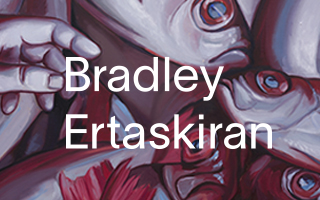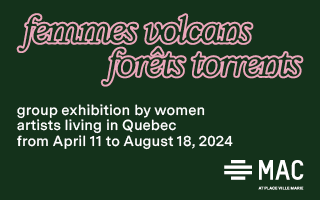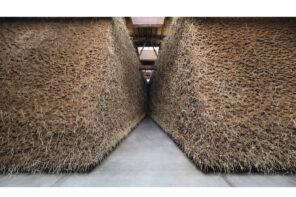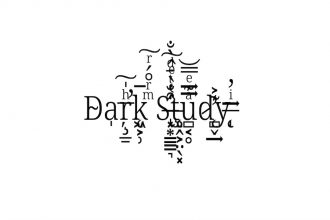Emma Goldman described anarchism as “a living force in the affairs of our life, constantly creating new conditions,” refusing a “theory of the future to be realized through divine inspiration.” It’s a visceral appeal to the lived experience of the variously marginalized: a unifying call to end class-based oppression. Self-proclaimed anarchist Christopher D’Arcangelo (1955–1979), whose short-lived artistic career included demonstrations against several art museums, shifted the contemporary conversation to help carve out a burgeoning movement now recognized as “institutional critique.” Concurrently, Los Angeles-based artist Michael Asher (1943–2012) began installing site-specific work that placed a similar politics in conversation with architecture’s poetics of space. The two artists form the center of the group show entitled You may add or subtract from the work: On the work of Christopher D’Arcangelo and Michael Asher, curated by Simon Leung and Sébastian Pluot, on view at the MAK Center’s Mackey Garage Top gallery.
The tidy exhibition deeply considers labor, exchange, and critical possibilities: the ethos and legacy of D’Arcangelo and Asher. Among the artists included are Dorit Cypis, Ben Kinmont, Silvia Kolbowski, Emilie Parendeau, and Working Artists and the Greater Economy (W.A.G.E.). The contemporary role of political protest figures as a prominent, timely theme, and begs an engagement with what Andrea Fraser identified as the tension between the “critique of institutions” and the “institution of critique.” A central question dogs the collected work: can institutional critique go beyond the spectacle of its exhibition? As Hollywood “protest art” becomes a symbolic elision of political work – bastions of economic privilege blandly castigating the systems upon which they depend, and under which they prosper – it is difficult to separate action from performance. The Kendall Jenner-Pepsi ad debacle recently reminded us that the appropriation of protest aesthetics often takes on a cheap cast – and invites cynics to simply roll their eyes. Against this backdrop, the show faces an uphill climb, convincing us to suspend a practiced disbelief – but the presentation of the artists’ gritty bona fides betrays no manipulative intent.
Asher may be the show’s local anchor, but D’Arcangelo’s stateless spirit animates the themes of the exhibition. Scions of the postwar artworld – the son of a prominent art dealer and the son of a well-known Pop painter, respectively – the two artists understood the prescribed conditions of artistic labor from youth, and worked to interrupt established conventions. D’Arcangelo’s work is distinguished by an outright resistance to the hierarchies of value established by the market economy. With his collaborator Peter Nadin, he collected several contracts and documents that outlined the construction work the pair pursued to supplement their unpaid artistic labor. A group exhibition organized by Nadin, Thirty Days Work (1979), invited visitors to an empty gallery at 84 West Broadway. The title foregrounds the time Nadin and D’Arcangelo spent refurbishing the exhibition space. A poster from that show hangs in the Mackey Garage Top, alongside a clear statement of artistic and economic intent: “We have joined together to execute functional constructions and to alter or refurbish existing structures as a means of surviving in a capitalist economy.” The inclusion of a W.A.G.E. poster (2014) ties the historical fight to recognize artist labor to a more current incarnation of the movement. The poster’s manifesto lists the demands of the organization, which seeks to build coalitions across the artworld, and establish fair standards for compensation to artists and art workers by non-profit arts organizations.
Like D’Arcangelo, Asher engaged with the built space of arts institutions to examine how structure and infrastructure inform each other. Unlike D’Arcangelo, Asher’s scrutiny often worked at the margins: slyly toying with the limits of the institutional framework. Language and words mattered greatly. Much of the work on view in You may add or subtract from the work is documentation of the artists’ rigorous research-based practices, as well as archival materials from the projects pursued by both D’Arcangelo and Asher. Photocopied reproductions of original exhibition catalogues are on display for visitors to flip through, imitating the scrappy, do-it-yourself quality of Xeroxed and stapled ‘zines.
Both artists were preoccupied with how bodies create meaning by occupying and moving in space. In 1977, invited by gallerist Claire Copley to show at the Los Angeles Institute of Contemporary Art (LAICA), Asher hired four participants and paid them four dollars an hour to go about their daily tasks in the gallery. The same year, in LAICA Journal, D’Arcangelo’s proposal, “LAICA as an Alternative to Museums” proffered a selection of blank pages for the reader to wrest back “curatorial control” from LAICA, encouraging the reader to paste the pages up on the its walls – and reclaiming space.
There’s either cruel irony or melancholy inevitability in canonizing this movement within the walls of an institution it railed against: a cannibalization of D’Arcangelo’s critical practice. When reviewing Anarchism without Adjectives during its 2013 run at Leonard and Bina Ellen Art Gallery in Montreal, the critic Emily Falvey noted her participation in the commodification of D’Arcangelo’s work by contributing a piece that might be absorbed by the art-market apparatus (as, indeed, I am doing here). Glorifying the “creative class” over a private collector’s champagne brunch, we might easily slip the staunch politics entirely, and fail to acknowledge the artistic labor implicit supporting the entire edifice. In the documentation of his work, D’Arcangelo carefully noted that the action itself was the work. Can we extract moments of genuine thrust from this now-co-opted critique – moments where hierarchies are challenged and institutional authority is threatened?
We could draw a parallel between D’Arcangelo’s 1975 Whitney Biennial demonstration and Parker Bright’s action at the 2017 iteration, protesting the controversial inclusion of Dana Schutz’s painting Open Casket (2016). D’Arcangelo chained himself outside the Whitney Museum, which was then Marcel Breur’s Brutalist citadel mocking the sleek Modernist boxes of Madison Avenue. Stencilled across his back was an oft-employed axiom: “When I state that I am an anarchist, I must also state that I am not an anarchist, to be in keeping with the (…) idea of anarchism. Long live anarchism.” By blocking entrance into the museum with his body, D’Arcangelo problematized the set of speculative values behind the inclusion and exclusion of artworks. The text scrawled on Bright’s own back – “Black Death Spectacle” – and his partial blocking of the Schutz painting is categorically an anarchic gesture; calling to mind Goldman’s repudiation of the control and violence inherent in accepted social orders. Bright, like D’Arcangelo, challenges the determination of material and cultural value in a space of authority. Captured though it has often been by institutions aiming to traffic in mere signifiers of “resistance,” the value of this form of critique occasionally still asserts itself sharply – in renewing a work inherent in questioning.


















A wonderful article that now asks us to question institutional critique when students, teachers, galerists, and curators identify with and belong to the same institution, the academic-artistic complex. Generally they tend to discredit critics for refusing to play the game. Institutional critique can go beyond the spectacle of its exhibition when its goal is not attention-seeking but reforming the foundations on which we institute. What we should be very conscious of is the very people now feted for their rebellion and criticism are those who were then and others who are now dismissed as lacking credibility by those in power who hang onto their privilege as gatekeepers.